Synthesizers Guide
Sound quality
It refers to the overall sonic performance, the richness, clarity, and depth of the sounds produced by the synthesizer. One way to determine the sound quality is by examining the number of voices or layers the synthesizer is capable of producing simultaneously. For example, the Yamaha Montage 8 offers 128-note polyphony, meaning it can generate up to 128 voices at once, resulting in a dense and layered sound. Another term to look for is waveform generation, which plays a crucial role in sound richness. The Korg Minilogue XD incorporates a multi-engine, allowing users to mix and match waveforms for endless sound possibilities. Other notable options with exceptional sound quality include the Moog Subsequent 37 and the Roland Jupiter-X. It's important to consider these specifications and terms when selecting a synthesizer for the best sound quality that suits your needs.
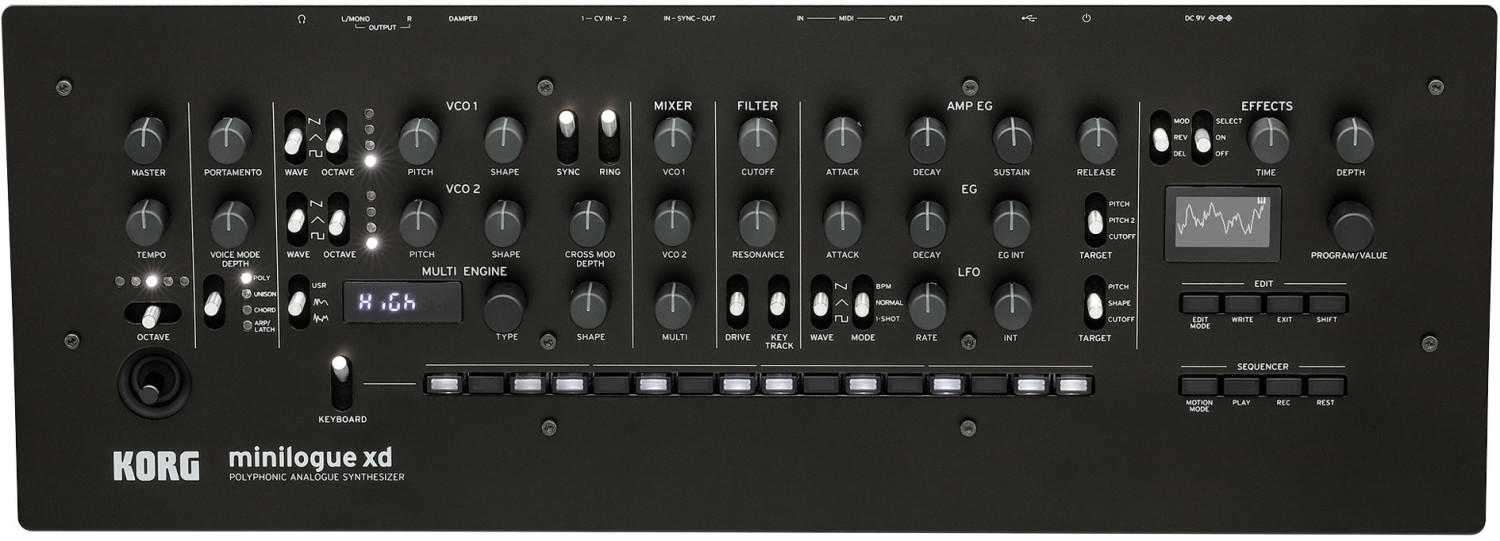
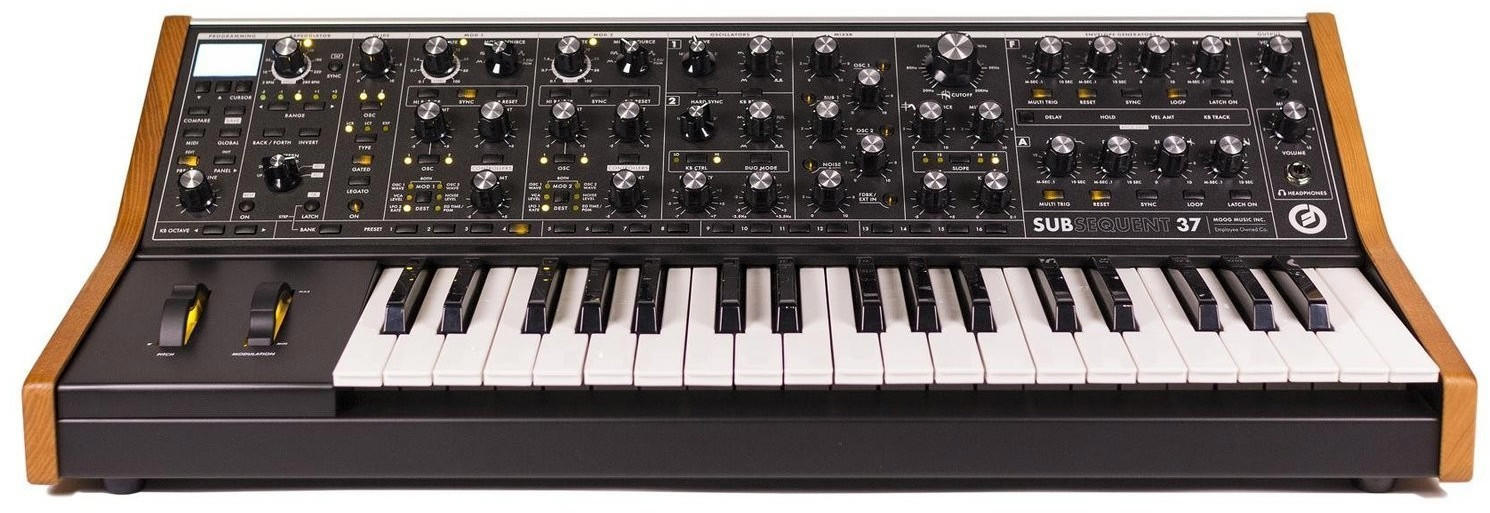
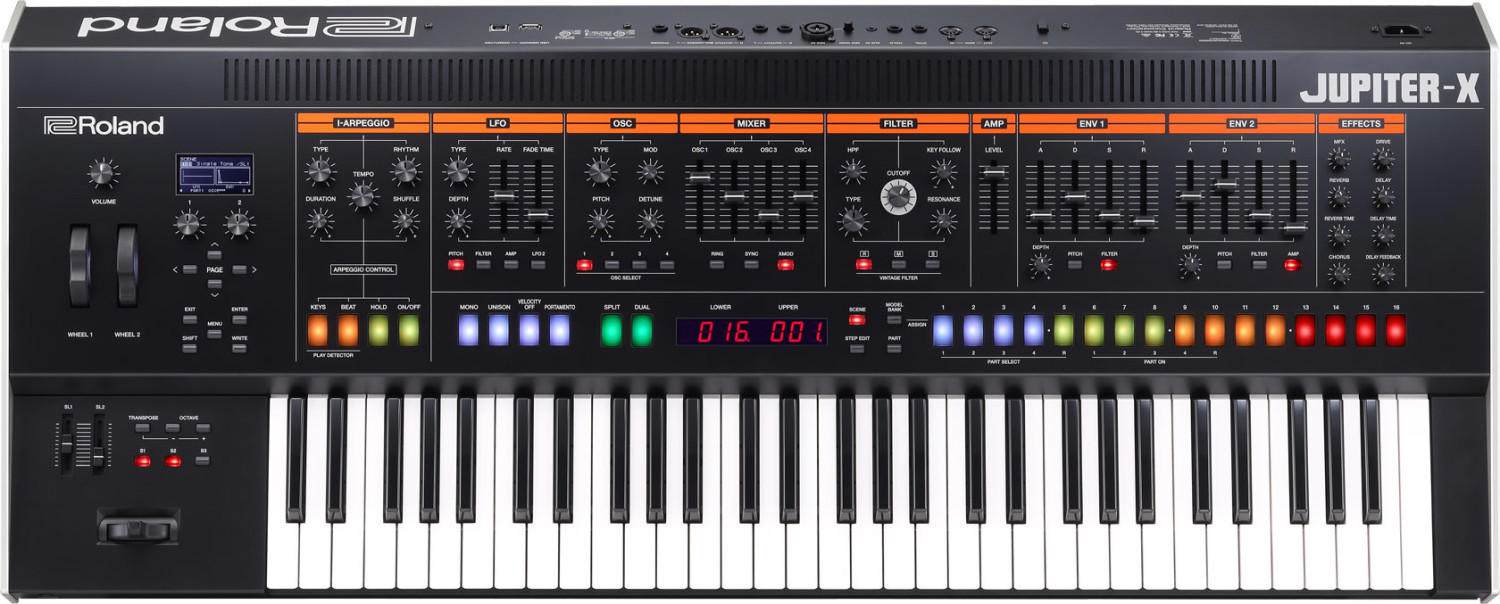
Number of voices
The number of voices refers to how many different sounds or notes the synthesizer can play simultaneously. Synthesizers with a higher number of voices provide more versatility and flexibility in creating complex and layered sounds. For example, the Dave Smith Instruments Prophet Rev2 synthesizer is available in two different versions: 8-voice and 16-voice, allowing musicians to choose the appropriate number of voices based on their specific needs. Another option is the Roland Juno-DS61, which features 128 voices, providing a wide range of possibilities for musicians to explore their creativity.
Some synthesizers are even available in rack-mounted format, offering a compact solution for those who desire superior sound quality and extensive voice options. An example is the Modal Electronics Argon8M, which supports up to 32 voices and includes a vast array of waveforms for diverse sonic palettes. These rack-mounted synthesizers are highly recommended for studio setups and professional musicians who require multi-voice capabilities.

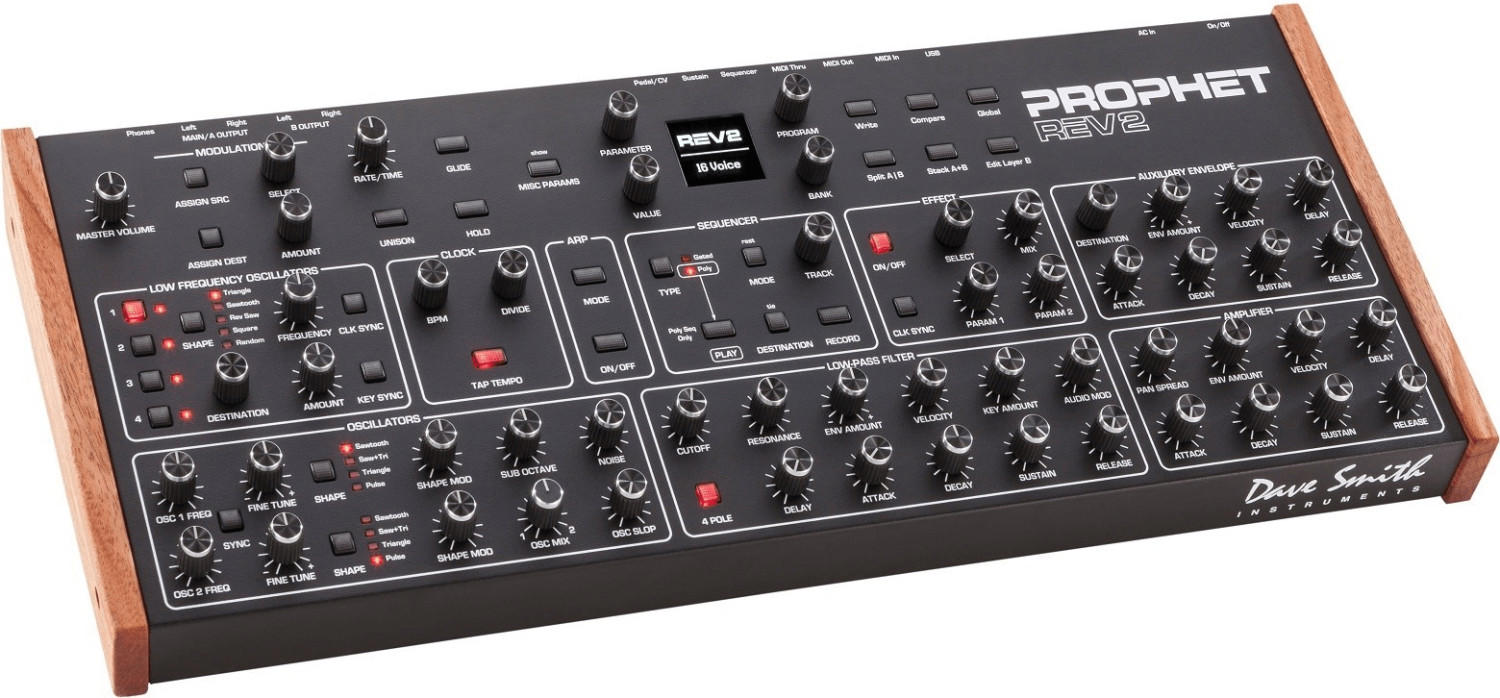


Polyphony
The higher the polyphony, the more intricate and layered the sounds you can create. For beginners or those on a budget, a synthesizer with 4-8 voices of polyphony would be suitable. The Korg Minilogue XD is a great option in this range, offering 4-voice polyphony and a wealth of modulation options.
For intermediate users, a synthesizer with 8-16 voices would be a welcomed upgrade. The Dave Smith Instruments Prophet Rev2 is worth considering, with its powerful 16-voice polyphony and dual digital effects per layer. In the professional segment, synthesizers like the Roland Jupiter-X take it to the next level with an impressive 256-voice polyphony, allowing for incredibly rich and complex sounds. Keep in mind, higher polyphony often leads to a higher price tag, so it's important to consider your budget alongside your desired level of complexity and nuance in sound production.



Oscillator types
Oscillators are responsible for generating the different waveforms that form the basis of the synthesizer's sound. The type of oscillator can greatly impact the character and versatility of the synthesizer.
There are different types of oscillators commonly found in synthesizers, including analog, digital, and wavetable oscillators. Analog oscillators, such as those found in the Moog Subsequent 37 and Arturia MiniBrute 2, offer warm and rich tones with a distinct vintage character. Digital oscillators, like those featured in the Korg Prologue 8 and Roland JD-Xi, provide a wide range of sound possibilities, including various waveforms and complex modulation options. Wavetable oscillators, seen in synthesizers such as the Waldorf Blofeld and Native Instruments Massive X, allow for the manipulation of multiple waveforms to create evolving and dynamic sounds. No matter the oscillator type you choose, it is crucial to consider how it aligns with your desired sound palette.

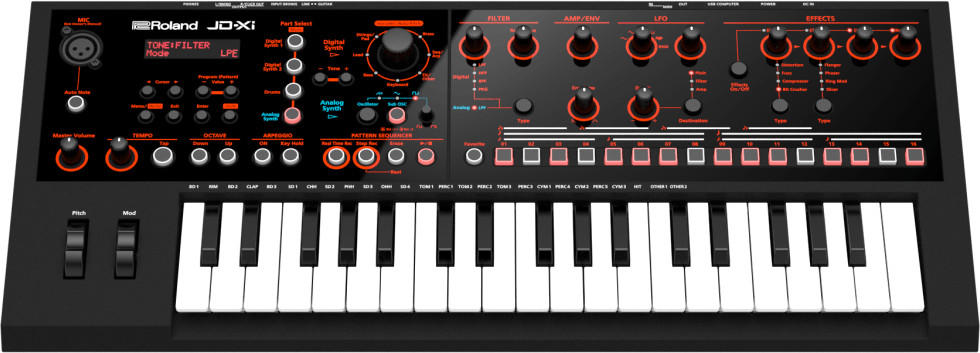
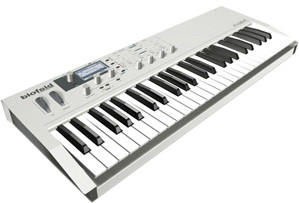

Preset sounds
Preset sounds are pre-programmed sounds that come with the synthesizer, allowing users to easily access a wide variety of tones and textures. This can be particularly helpful for beginners or musicians who may not be well-versed in sound design. Some synthesizers, like the Korg Minilogue XD or Roland JUNO-DS88, offer an extensive collection of high-quality preset sounds, ranging from classic analog synth sounds to realistic acoustic instruments. These synthesizers also often have advanced sound engines and multiple sound banks, ensuring a diverse selection of presets for different musical styles. For those seeking a more budget-friendly option, the Arturia Microbrute or Teenage Engineering OP-1 also provide an impressive range of unique preset sounds that can suit a variety of genres.



Modulation options
Modulation refers to the techniques used to alter a sound wave's parameters over time, adding dynamic and expressive elements to your music. Synthesizers with comprehensive modulation options give you more creative freedom and allow you to design unique sounds.
There are a variety of modulation options to look for in a synthesizer. For instance, look for synthesizers that offer multiple LFOs (Low-Frequency Oscillators). LFOs generate periodic waveforms at a frequency below the audible range, and they can be used to modulate various parameters such as pitch, filter cutoff, and amplitude. The Moog Matriarch is an excellent example, featuring four LFOs for versatile modulation possibilities.
Another important modulation feature to consider is the availability of an on-board modulation matrix. A modulation matrix allows you to assign different modulation sources (such as LFOs, envelopes, or external sources) to various parameters, giving you unprecedented control over your sound design. The Arturia MatrixBrute is a powerful synthesizer that offers an advanced modulation matrix with up to 16 sources and 4 destinations simultaneously, allowing for intricate sound manipulations.
In addition, the type of modulation options available also varies across different types of synthesizers. For example, analog subtractive synthesizers, like the Korg Minilogue XD, typically offer versatile filter and oscillator modulation options. On the other hand, modular synthesizers, such as the Make Noise 0-Coast, provide extensive capabilities for patching and routing modulation sources to any desired parameter via patch cables.
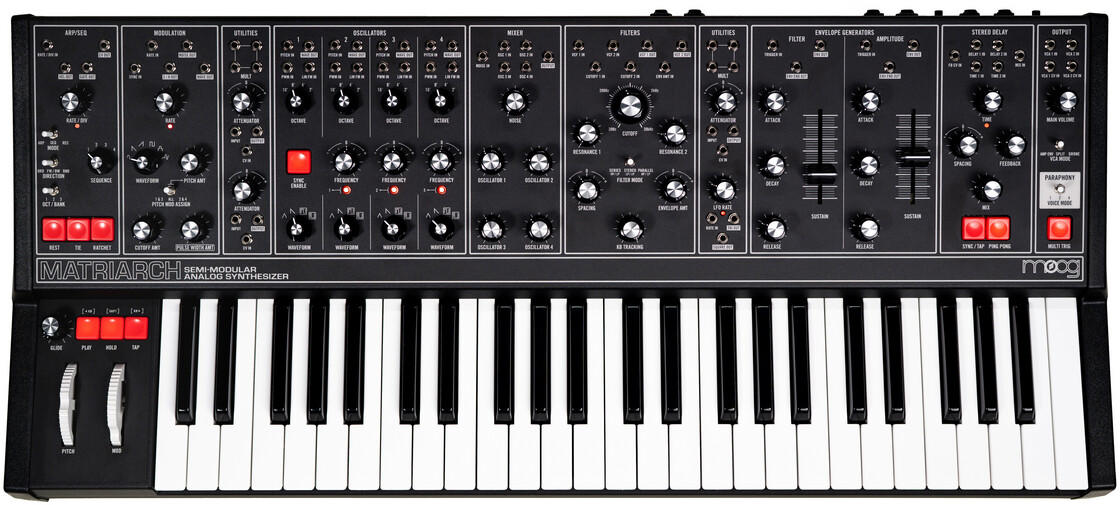
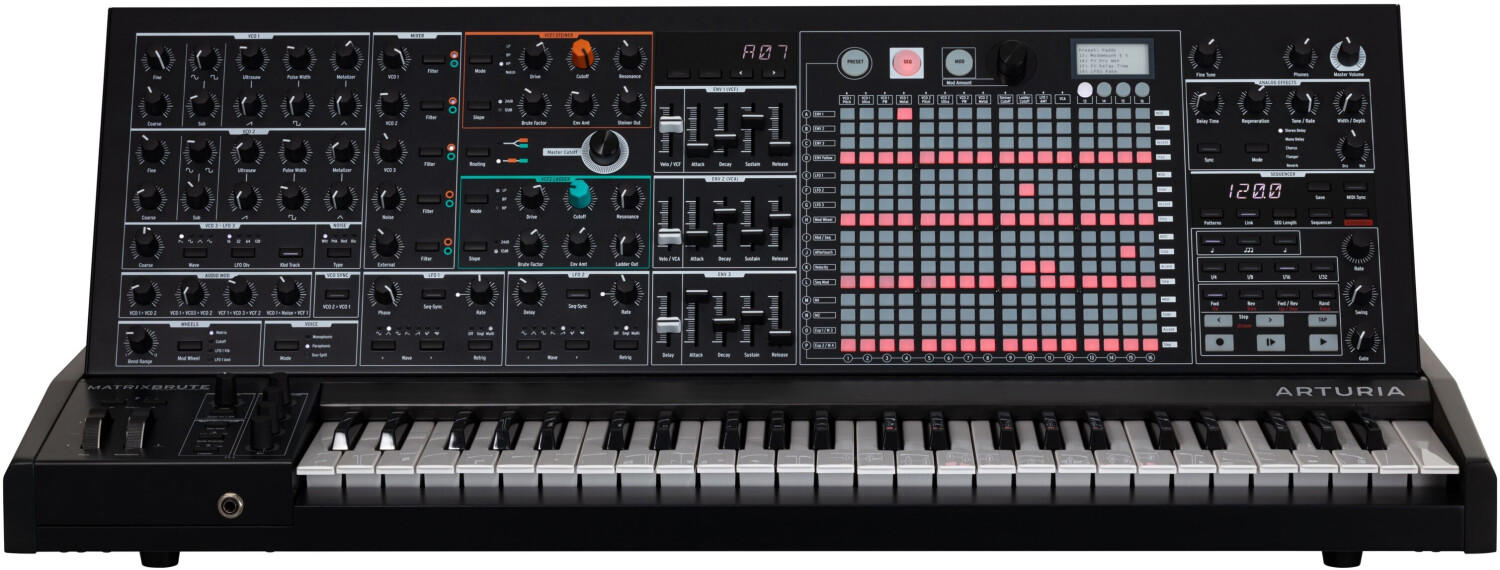

Ultimately, when choosing a synthesizer based on modulation options, consider your specific sound design preferences and the level of control you need over your sound. By exploring the market's diverse offerings and evaluating their modulation capabilities, you can select the best synthesizer to take your music production to the next level.
Filter types
The type of filters a synthesizer incorporates can greatly affect the overall sound and versatility of the instrument. Common filter types include low-pass, high-pass, band-pass, and notch filters. The Moog Subharmonicon is an excellent example that features a classic and iconic 24 dB/octave Moog ladder filter, known for its warm and rich sound. Another remarkable option is the Korg Minilogue XD, which offers a multi-mode filter with low-pass, high-pass, and band-pass options, allowing for a wide range of tonal possibilities. If you're looking for something more inclusive, the Arturia MiniBrute 2S packs an array of filter options, including a Steiner-Parker multimode filter with low-pass, high-pass, band-pass, and notch modes.


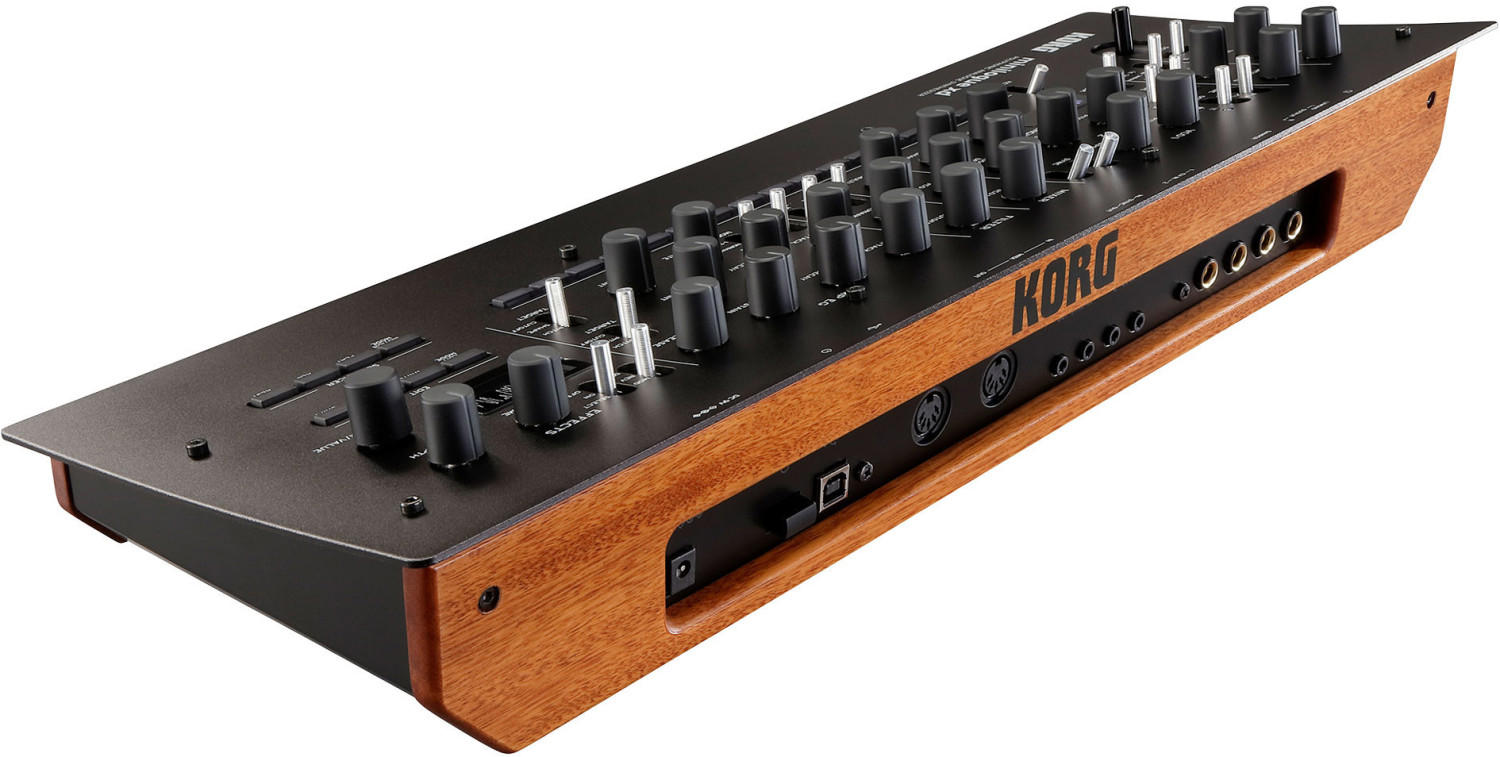
Built-in effects
Built-in effects can greatly enhance your sound and provide a wide range of sonic possibilities. Some popular synthesizers known for their exceptional built-in effects include the Roland JD-Xi and the Korg Minilogue XD.
The Roland JD-Xi is a compact hybrid synthesizer that offers a diverse range of built-in effects, including distortion, flanger, delay, reverb, and more. It provides an impressive selection of effects that can shape and transform your sound in real-time. Additionally, it features a "Cross Mod" function that allows for complex signal routing and modulation capabilities. This synth is great for musicians looking for versatile effects to enhance their performance.
On the other hand, the Korg Minilogue XD synthesizer also boasts powerful built-in effects such as chorus, delay, and reverb. It offers a "Multi-Engine" feature that provides customizable digital oscillators and effects, allowing for a vast palette of sounds. The variety of effects available in this synthesizer makes it an excellent choice for those who want to create unique and experimental sounds for their music.

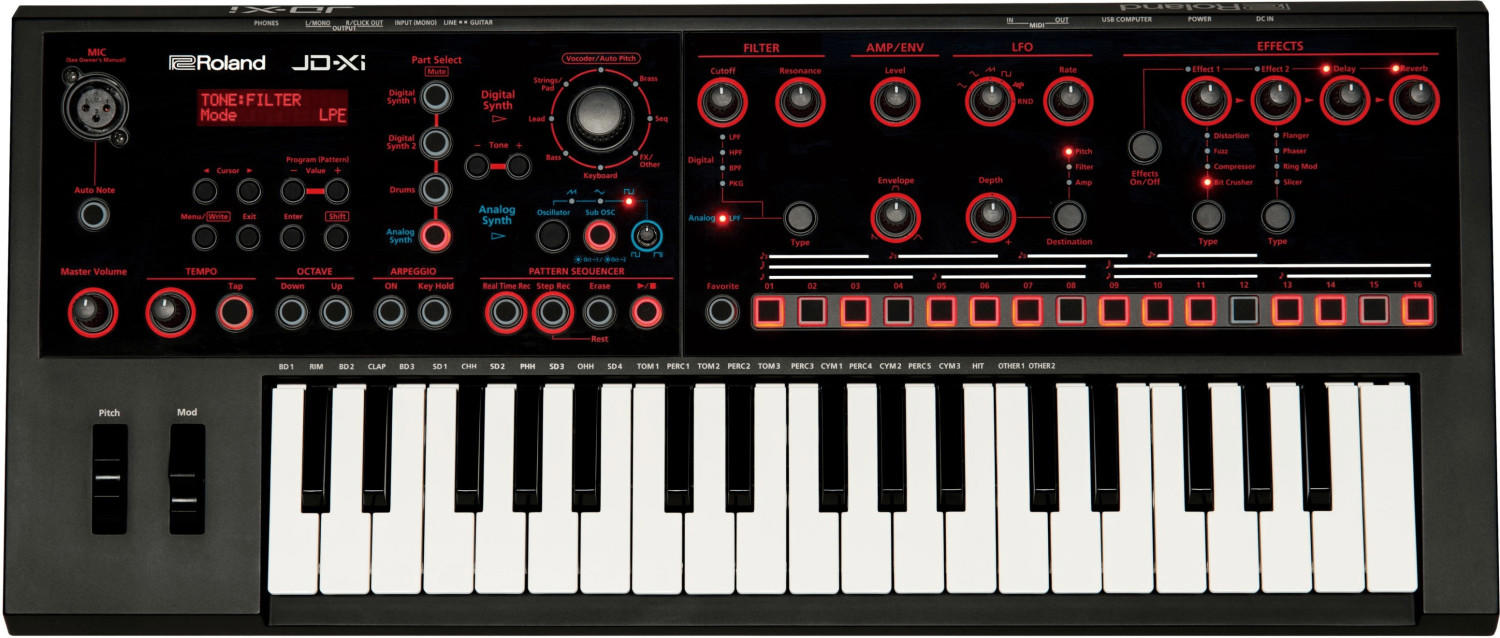


In summary, when selecting a synthesizer, don't overlook the importance of built-in effects. The Roland JD-Xi and Korg Minilogue XD are prime examples of synthesizers that stand out for their exceptional built-in effects and are worth considering for ambitious musicians seeking to craft their distinctive musical style.
Arpeggiator
An Arpeggiator allows you to create complex and unique patterns by automatically arpeggiating the notes played on the keyboard. This makes it a highly desirable feature for both beginners and experienced synthesizer users.
There are various synthesizers on the market that offer outstanding arpeggiator capabilities. Moog Subsequent 37 is a popular choice, boasting a robust 64-note sequencer with dedicated knobs to control the arpeggio rate, range, and other parameters. Additionally, the Korg ARP Odyssey has gained a significant reputation, allowing you to create rhythmic and harmonic patterns using a comprehensive arpeggiator with different playback modes. Lastly, the Roland Jupiter-X offers a wealth of creative possibilities with its powerful arpeggiator, including chord memory and pitch control. These synthesizers showcase the diversity of options available to musicians who prioritize a solid arpeggiator in their synth.


Sequencer
A sequencer allows users to create and arrange musical patterns and sequences by programming the synth to play specific notes and rhythms automatically. One great option for a synth with a built-in sequencer is the Korg Minilogue XD. It offers an intuitive 16-step polyphonic sequencer, enabling the creation of intricate and evolving musical patterns. Another notable mention is the Elektron Digitakt, which features an eight-track sequencer with parameter locks, enabling users to fine-tune their sequences by altering specific sound parameters on each step. For those looking to explore more advanced sequencing possibilities, the Arturia MatrixBrute provides a powerful 64-step sequencer with modulation capabilities and the ability to sync with other devices, opening up a world of possibilities for complex arrangements.

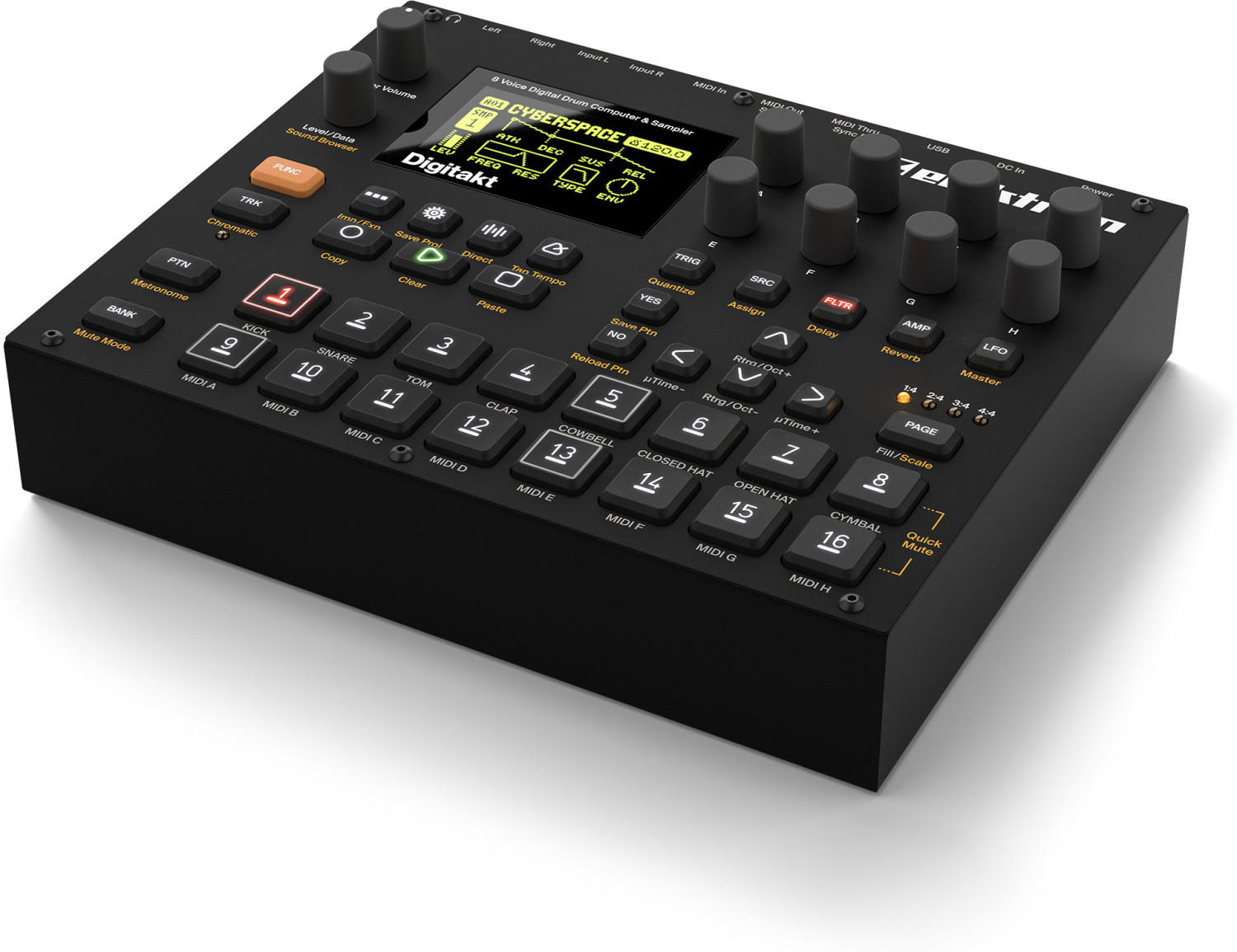

Envelope generators
These generators play a vital role in shaping the contours and dynamics of the sound. Look for synthesizers with multiple envelope generators for versatile sound design. Some notable options include the Moog Sub 37 with its dual ADSR envelope generators, allowing for precise control over attack, decay, sustain, and release parameters. Another option is the Arturia MatrixBrute, which features three fast and highly-responsive envelope generators providing extensive modulation possibilities. If you're on a tighter budget, the Korg Prologue includes a flexible ADSR envelope generator that is designed to faithfully replicate the distinctive envelope characteristics of vintage synthesizers.
In terms of product segments, synthesizers can be categorized into high-end professional models and more budget-friendly options for beginners or casual musicians. In the professional segment, you will find synthesizers like the Moog Subsequent 37, Sequential Prophet X, and Elektron Analog Four MKII, all of which boast powerful and highly customizable envelope generators. For those starting out or looking for more affordable options, the Novation MiniNova and Korg Minilogue XD provide versatile envelope generation capabilities at a more accessible price point. Whether you're a seasoned musician or just starting, it is essential to ensure the envelope generators of your chosen synthesizers meet your desired specifications for sound manipulation and control.


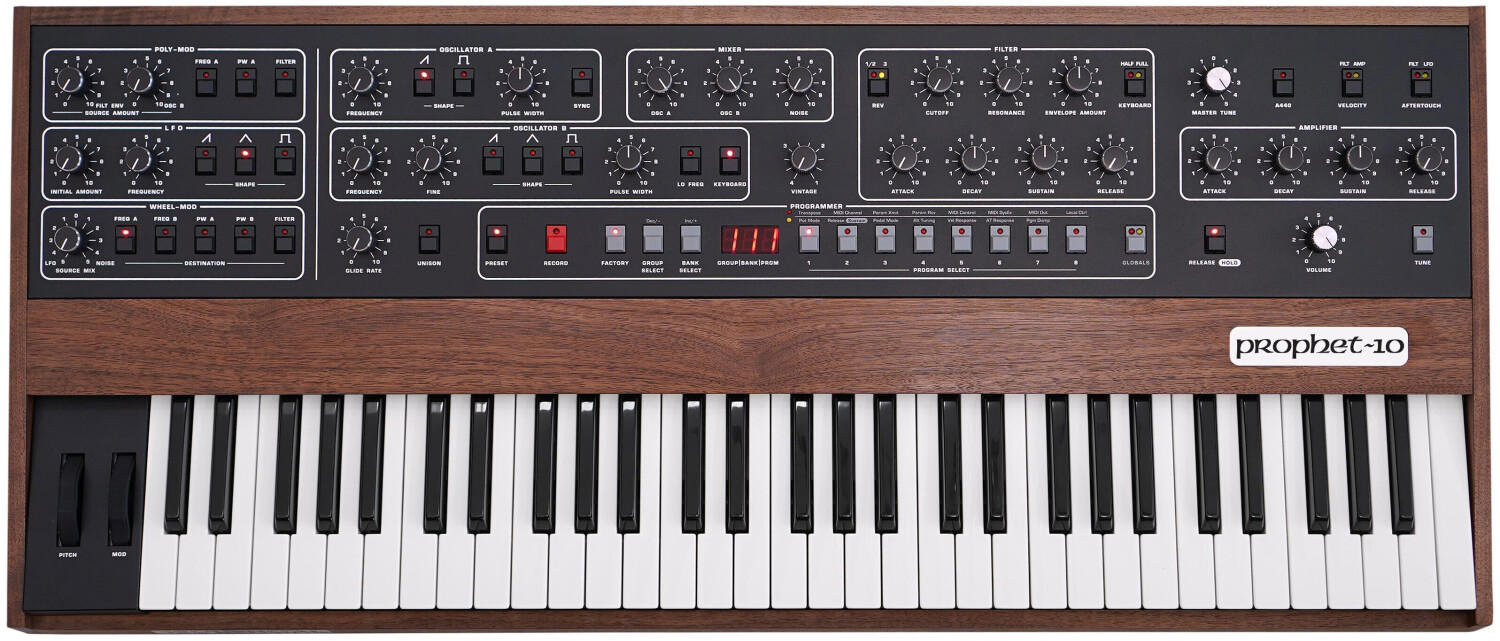


LFOs
LFOs:
When selecting a synthesizer, one of the crucial factors to consider is the availability and versatility of LFOs (Low-Frequency Oscillators). LFOs provide modulations to different aspects of a sound, creating interesting textures and evolving timbres. Look for a synthesizer that offers multiple LFO waveforms such as sine, square, triangle, and sawtooth, empowering you to craft a wide range of sounds.
For example, the Moog Subsequent 25 boasts two LFOs with a variety of waveforms, enabling deep sonic sculpting. Its LFO 1 provides four waveforms, including the highly sought-after Sample & Hold. Conversely, the Arturia MiniBrute 2S offers three LFOs with eight waveforms each, including stepped random and smooth random options, yielding limitless sonic possibilities.
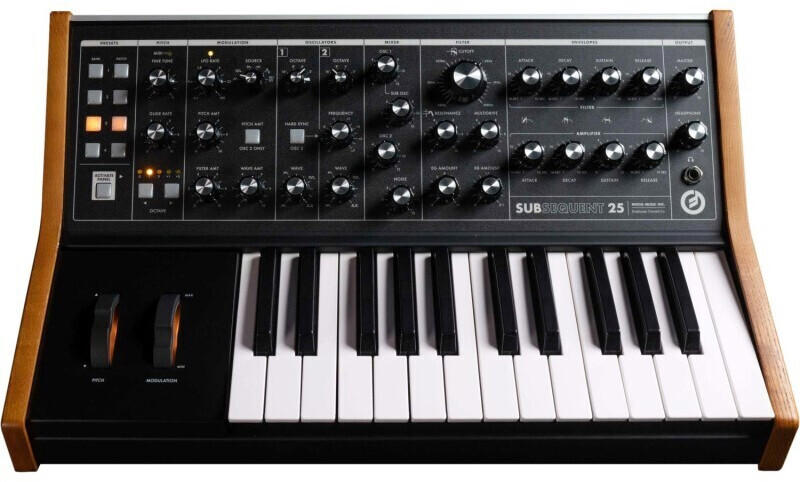
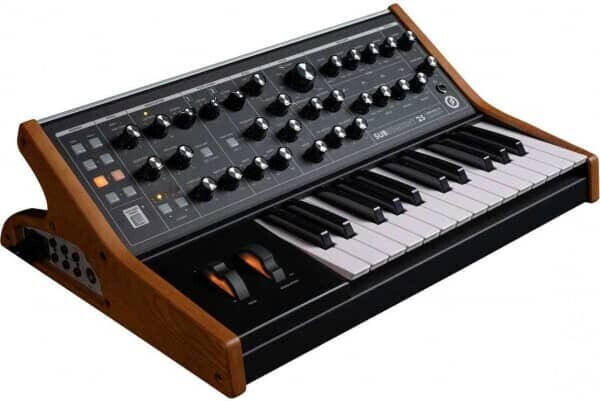

Some synthesizers, like the Elektron Digitone, integrate four LFOs. Each oscillator can be assigned a dedicated LFO, facilitating intricate modulations. On the other hand, the Korg Prologue is equipped with a programmable LFO, providing seven waveforms, allowing for precise sound manipulation. Additionally, the synth divides into two versions: the 8-voice and 16-voice models, catering to the different needs of synthesizer enthusiasts. Remember to explore the diverse LFO capabilities among synth options to enhance your sonic palette and expressiveness.
MIDI connectivity
MIDI, or Musical Instrument Digital Interface, allows for communication between different music devices. This allows you to connect your synthesizer to a computer, a MIDI controller, or other MIDI-enabled devices, enhancing its versatility and functionality.
One synthesizer that offers extensive MIDI connectivity options is the Novation Peak. This 8-voice polyphonic synthesizer features a variety of MIDI connections, including MIDI In/Out/Thru ports, as well as USB MIDI connectivity. Additionally, it supports MIDI CC and System Exclusive messaging, allowing for seamless integration with your existing MIDI setup.
For those looking for a more compact option, the Arturia MicroFreak is an excellent choice. Despite its compact size, it offers a wide range of MIDI connectivity features. It includes a standard MIDI DIN input and output, as well as USB MIDI connectivity, ensuring compatibility with a variety of MIDI devices.


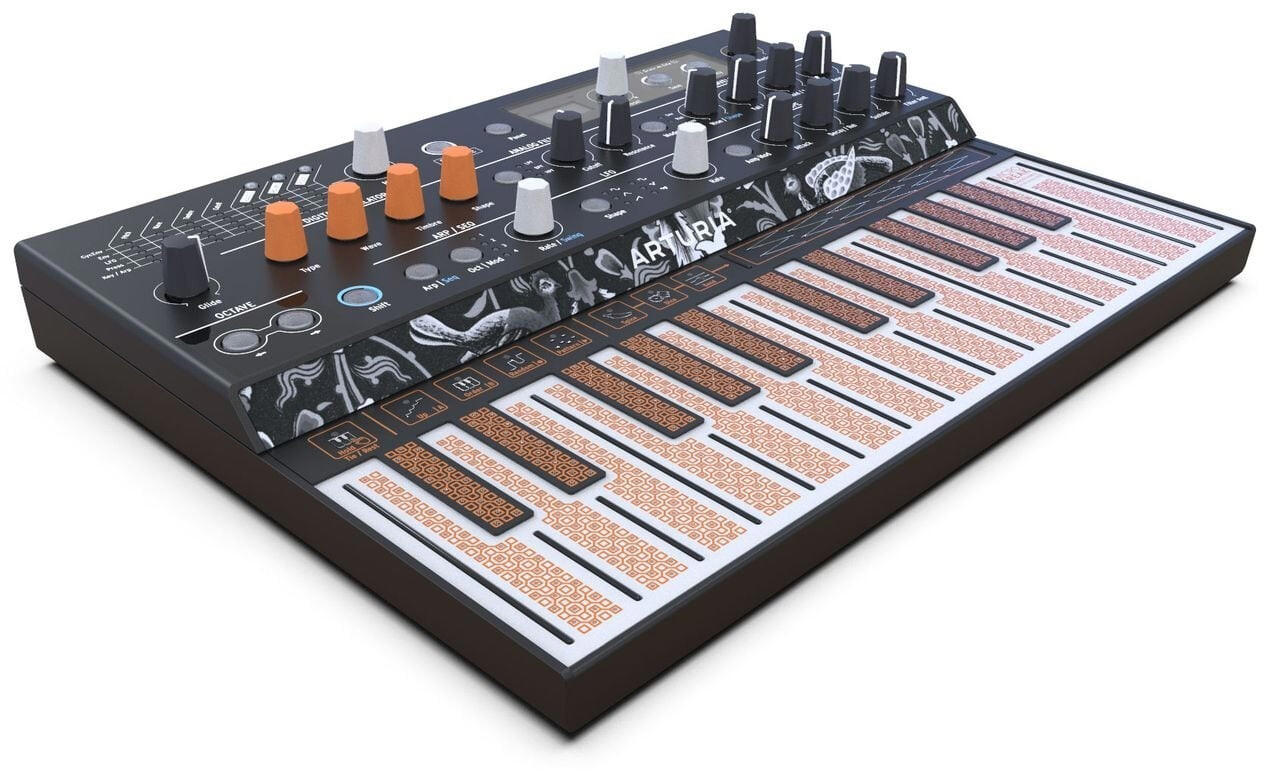
USB connectivity
USB connectivity allows for easy integration with computers and other electronic devices, offering convenient ways to record, edit, and produce music. Look for synthesizers that support USB MIDI, which enables seamless communication between the synthesizer and your computer, eliminating the need for additional MIDI interfaces. For example, the Korg Minilogue XD is a versatile synthesizer that offers USB MIDI connectivity, allowing you to easily control and interact with virtual instruments or DAW software. Additionally, the Arturia MicroFreak features a USB connection that not only provides MIDI functionality but also allows seamless firmware updates, keeping your synthesizer up to date with the latest features and improvements.




CV/Gate connectivity
CV (Control Voltage) is used to control parameters such as pitch, amplitude, and modulation, while Gate is used to trigger events such as notes or sequences. A synthesizer with extensive CV/Gate connectivity opens up a world of possibilities for expanding your sonic palette.
One example of a synthesizer that excels in CV/Gate connectivity is the Moog Grandmother*. It offers a comprehensive set of CV/Gate inputs and outputs, allowing you to connect and control other modular gear effortlessly. With four assignable CV inputs and inverters, as well as MIDI and USB connectivity, the Grandmother gives you the flexibility to integrate it into your setup seamlessly.
Another class of synthesizers to consider is the semi-modular category, which provides a combination of fixed architecture and patchable modules. Within this category, the Make Noise 0-Coast* stands out for its excellent CV/Gate capabilities. This compact and powerful synthesizer offers multiple CV inputs and outputs, including gate, pitch, trigger, and more. The 0-Coast also features a unique and intuitive control interface that encourages experimentation and creativity.
When choosing a synthesizer based on CV/Gate connectivity, it's essential to consider the number and types of CV/Gate inputs and outputs each instrument offers. Advanced features like inverters, attenuators, and MIDI/USB connectivity further enhance the synthesis possibilities and offer a seamless integration experience with your existing gear.
Size and weight
If portability is crucial for you, then a compact and lightweight synthesizer would be the way to go. One example of such a device is the Korg Minilogue XD. It weighs only 2.6 kg and has dimensions of 500 mm x 300 mm x 85 mm. Despite its small size, it offers an impressive range of features, including four-voice hybrid analog/digital synthesis and a built-in sequencer.
On the other hand, if you are looking for a more robust and professional-grade synthesizer, you may want to consider larger options. The Moog Subsequent 37 CV is a great choice in this category. Weighing 10.9 kg and measuring 663 mm x 376 mm x 171 mm, this synthesizer offers enhanced features like duophonic playability and a velocity-sensitive keyboard. Its larger size allows for a more comprehensive control layout, making it suitable for professional musicians and studio use.



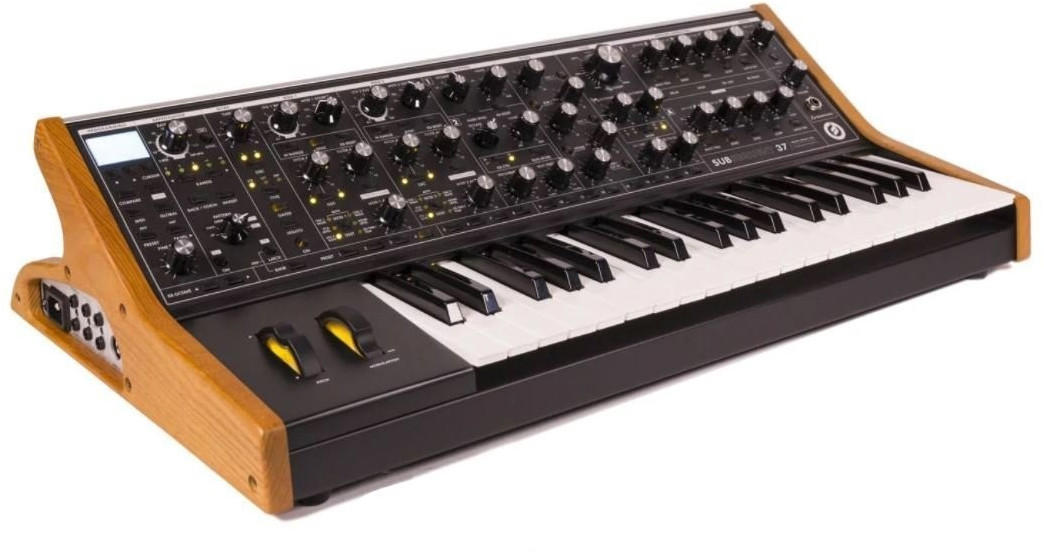
Keyboard type and size
Various types of keyboards are available, including full-sized, semi-weighted, and mini. Full-sized keyboards, like the Korg Kronos LS88, have the standard 88 keys for an authentic piano-like playing experience. Semi-weighted keyboards, such as the Yamaha MODX7, offer a compromise between the feel of a piano and the convenience for performing other synthesizer functions. If space is a constraint or portability is a priority, mini keyboards like the Native Instruments Komplete Kontrol M32 with 32 keys might be a great fit as they are lightweight and compact.
In terms of size, synthesizers can be classified into three main groups: desktop, portable, and stage models. Desktop synthesizers, like the Dave Smith Instruments Prophet X, are designed for studio use and have a larger footprint with various controls and functions ideal for sound designing. Portable synthesizers, such as the Roland Gaia SH-01, are compact and lightweight, making them suitable for on-the-go musicians or bedroom producers. Finally, stage synthesizers like the Nord Electro 6D 73 are specifically built for live performances and come with features like large LCD screens, dedicated performance controls, and rugged construction to withstand the demands of touring musicians.




Aftertouch
Aftertouch allows the player to apply pressure on the keys after they have been played, adding an extra layer of expression to the sound. This feature is particularly useful for creating unique, dynamic textures and adding depth to performances.
Some synthesizers that excel in aftertouch capabilities include the Yamaha Montage 8. With 88 weighted keys and a Full Motion Sequencer, this synthesizer offers polyphonic aftertouch functionality, allowing players to control individual notes independently for impressive expressive capabilities. Another worthy choice is the Roland Fantom 8, which boasts a powerful synth engine and provides channel aftertouch, enabling players to manipulate the sound of specific channels with greater precision. Other notable options include the Novation Summit, Korg Kronos 2, and the Moog One, each offering varying degrees of aftertouch sensitivity to suit different playing preferences and styles.



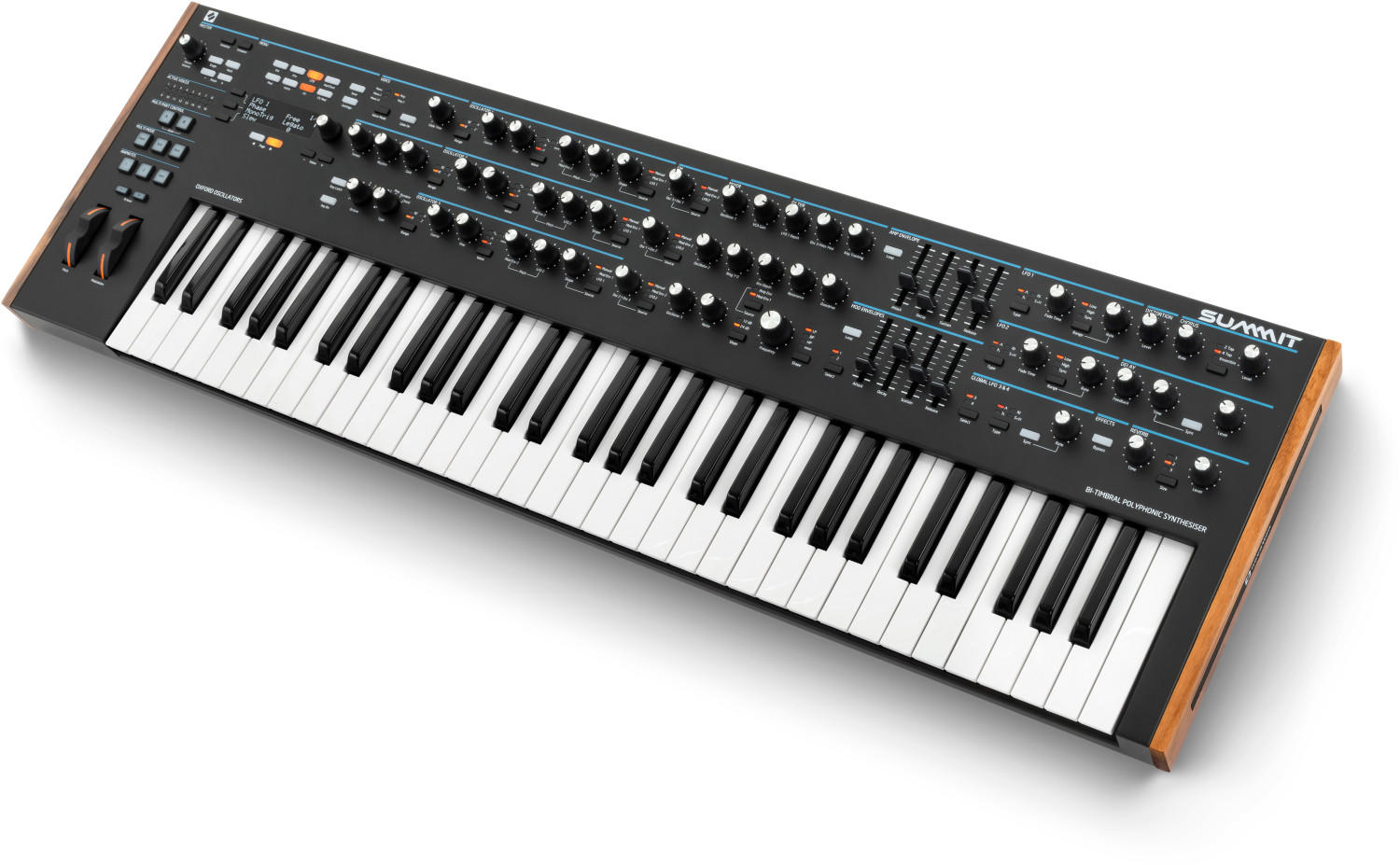
Remember, while Aftertouch is an important factor to consider, other features such as sound quality, polyphony, and compatibility should also be evaluated to ensure a well-rounded synthesizer that meets your specific needs and preferences.
Expression pedal inputs
These inputs allow you to connect an external pedal, enabling you to control various aspects of the sound with your foot. This can greatly enhance your playing experience and add another layer of expressiveness to your music. When looking for a synthesizer with expression pedal inputs, it's important to consider how many inputs are available and the compatibility with different types of pedals.
One example of a synthesizer with expression pedal inputs is the Roland System-8. This powerful synthesizer features a dedicated pedal input that allows you to connect an expression pedal for real-time control over parameters such as pitch, modulation, and cutoff. Another option to consider is the Moog Subsequent 37, which offers an expression pedal input for controlling parameters like filter cutoff and modulation amount. It also supports both continuous controllers (CV) and expression voltage inputs, providing compatibility with a wide range of pedals.




In the market, you will find synthesizers that cater to different segments. In the beginner or entry-level segment, the Korg Volca Keys is a compact synthesizer that features an expression input for added control over the three-voice polyphonic synthesizer. In the professional segment, the Sequential Prophet-6 is a highly-regarded synthesizer with expression pedal support, allowing you to bring an extra level of expression to your performances.
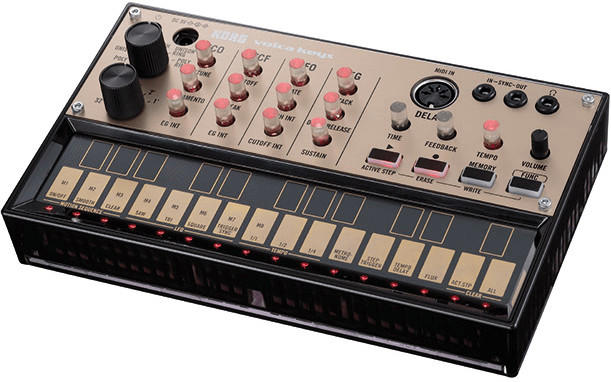


Modulation wheel
This wheel allows you to manipulate parameters such as pitch bend, vibrato, filter cutoff, and LFO intensity, among others. Having a responsive and well-designed modulation wheel can greatly enhance your playing experience and add expressiveness to your performance.
When looking for a synthesizer with a versatile modulation wheel, there are several options available in the market. One notable product is the Arturia MiniBrute 2S, which features a touch-sensitive pitch and modulation strip that provides a unique and flexible way to sculpt your sounds. Additionally, the Roland JD-Xi offers a dedicated modulation wheel that allows you to shape your tones in real-time, making it a great choice for live performances. For those seeking a high-end option, the Dave Smith Instruments Prophet X boasts a modulation wheel that provides precise control over wave shaping and timbre modulation. These synthesizers are just a few examples of the wide range of products available, catering to different budgets and preferences.



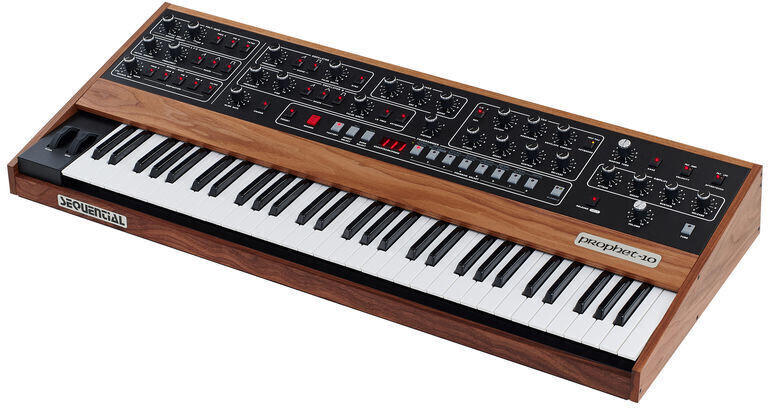
Pitch bend wheel
This allows musicians to manipulate the pitch of a note to create expressive and dynamic performances. Look for synthesizers that offer a high-resolution pitch bend wheel that responds accurately to subtle changes in touch. Additionally, consider the range of pitch bending available. Some synthesizers, such as the Moog Subsequent 37, offer a range of +/- 12 semitones, providing a wide range of expressive possibilities. Other synthesizers, such as the Prophet-6 by Sequential, feature a pitch bend range of +/- 2 semitones to allow for more subtle pitch adjustments.
In terms of different groups or segments of synthesizers, some fall into the category of entry-level or beginner synthesizers. These could include products such as the Korg Minilogue XD, which features a pitch bend wheel alongside other useful features at an affordable price point. On the other hand, there are high-end professional synthesizers like the Moog Matriarch, which not only offers an exceptional pitch bend wheel but also provides options for expressive sound modulation through other control elements. Ultimately, the choice of synthesizer will depend on your specific needs and budget, but a well-designed and responsive pitch bend wheel can greatly enhance your playing experience.




Control surface layout
It refers to the arrangement and design of physical controls, knobs, sliders, and buttons on the synthesizer. A well-organized control surface layout can significantly enhance workflow and ease of use. When looking for a synthesizer with a well-designed control surface layout, it's important to consider the placement and labeling of controls, the size and spacing between controls, and the overall ergonomics of the synthesizer.
One example of a synthesizer with a superb control surface layout is the Moog Subsequent 37. Its control surface is thoughtfully designed, providing instant access to all the essential parameters for sound shaping. The knobs and switches are positioned in a way that makes tweaking sounds intuitive and effortless. Another example of a synthesizer with a well-organized control surface layout is the Korg Minilogue XD. Its control panel features a clear labeling system, making it easy to identify and adjust the different sections and parameters of the synthesizer. With its sleek design and ergonomic layout, this synthesizer offers a user-friendly experience for both beginners and professionals.




Several synthesizers on the market can be categorized into different segments based on their control surface layout. In the modular synthesizer segment, products like the Make Noise Black & Gold Shared System and the Intellijel 7U Performance Case are known for their efficient design and segment-specific control arrangements. In the workstation synthesizer segment, the Roland Fantom-8 and KORG Kronos-88 stand out with their comprehensive control panels, enabling extensive control over the built-in sound engines. Lastly, in the analog synthesizer segment, the Dave Smith Instruments Prophet-6 and the Arturia MatrixBrute offer control surface layouts that are optimized for hands-on manipulation and creative sound design.



User interface
This refers to how easy and intuitive it is to use and navigate through the various functions and controls of the synthesizer. An ideal user interface should have well-labeled knobs, sliders, buttons, and a clear display to provide a visual representation of the sound parameters being adjusted. A good example of a synthesizer with an excellent user interface is the Moog Subsequent 37, which features a well-designed control panel and intuitive layout that allows for effortless sound sculpting. Another option is the Korg Minilogue XD, which combines a sleek and modern-looking interface with a powerful sound engine. Its clear OLED display and logically positioned knobs and buttons make it easy to program and shape sounds without any hassle.
In terms of keyboard synthesizers, one popular segment is the compact and portable keyboards. The Roland JD-Xi is a great choice, offering a highly approachable interface with intuitive controls and versatile sound capabilities. Another example is the Novation MiniNova, featuring a clear LCD screen and an intuitive layout, making it easy for musicians of all levels to dive into sound creation and experimentation.



Display type and size
The display provides valuable information about the settings, parameters, and presets of the synthesizer. A larger display makes it easier to navigate through the intricate menu systems and access various features with clarity. Some synthesizers feature a high-resolution OLED display, which offers enhanced visibility and crisp images. For example,the Korg Prologue features a large OLED display that provides clear and detailed visual feedback, allowing users to easily make adjustments and work with the various synthesis engines.
Another option to consider is a synthesizer with a color display, such as the Roland JD-XA. The color display not only improves visibility but also enhances usability by using color-coded icons and visual elements. This makes it easier to navigate through complex patches and editing options. The display size and type can vary depending on the synthesizer, so it is essential to consider your specific preferences and needs. Ultimately, the display type and size will greatly influence your overall experience with the synthesizer.
Some synthesizers offer a smaller display that focuses on providing essential information in a compact size. These displays can still be effective in presenting crucial parameters and settings without overwhelming the user. For example, the Arturia MiniBrute 2S features a small but informative OLED display that allows users to access important synthesis functions and perform in-depth editing. These smaller displays can be useful for those who prefer a more minimalist design or have limited space available.
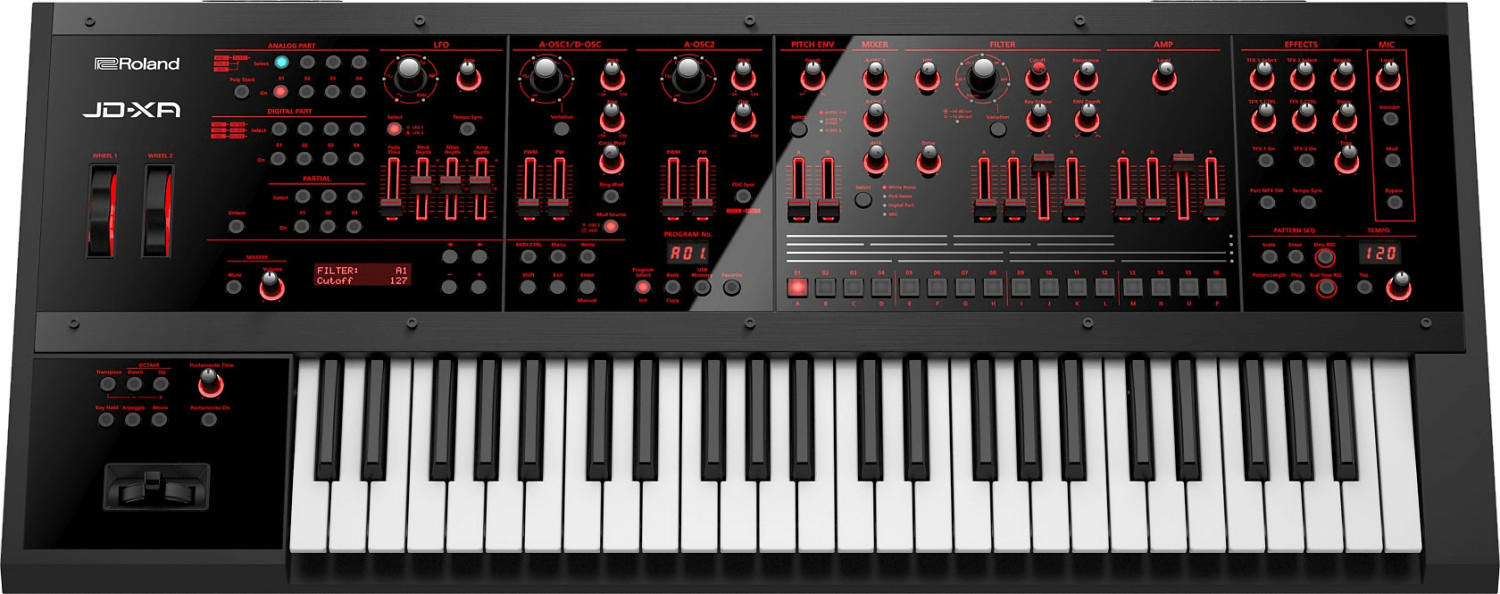
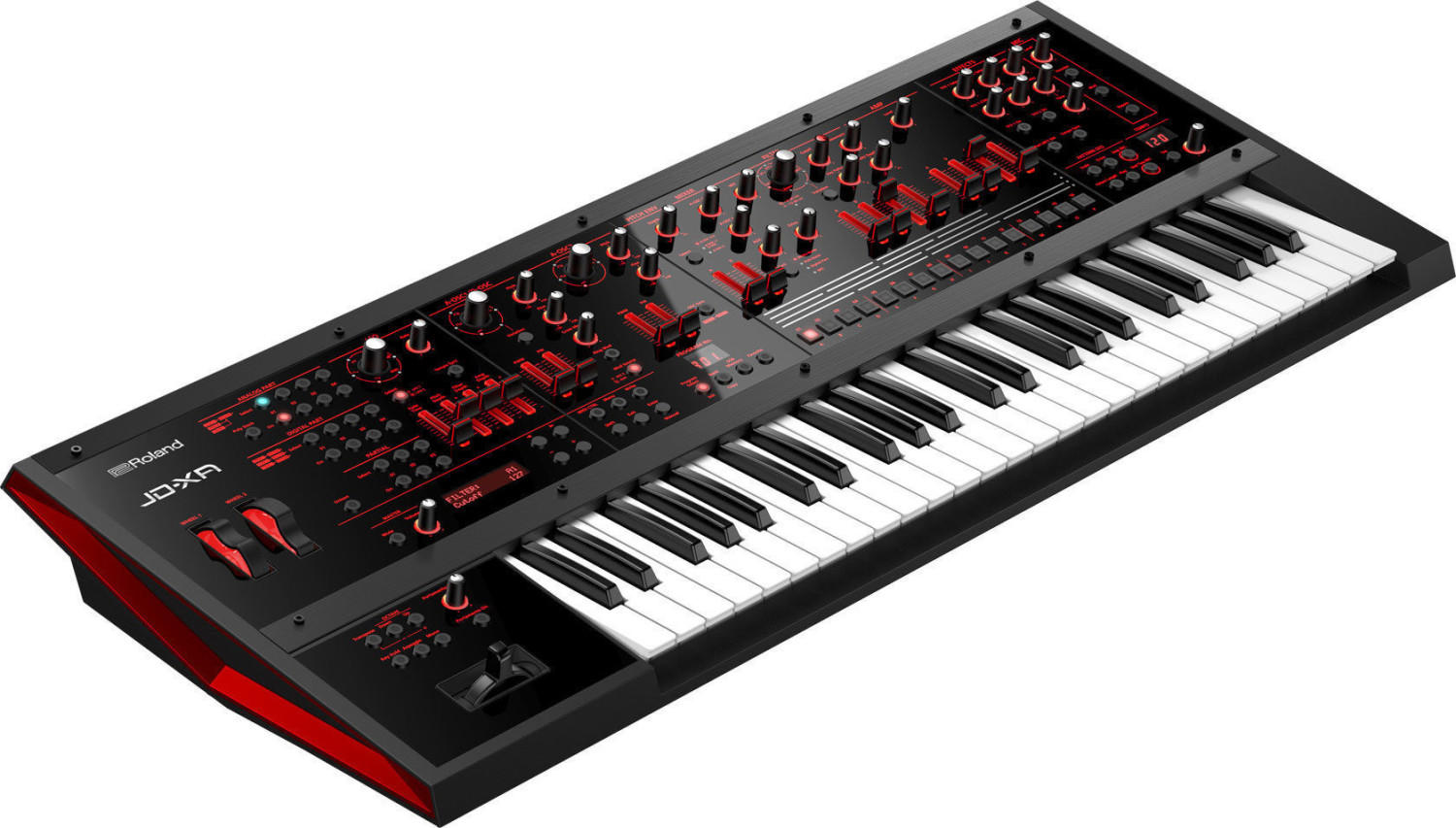

Note: The Korg Prologue, Roland JD-XA, and Arturia MiniBrute 2S are just a few examples in the market that demonstrate the various display types and sizes available. It's important to explore and research different synthesizer models to find the one that best suits your preferences and needs regarding display size and type.
Knob quality
Knobs play a vital role in controlling the sound and overall performance of a synthesizer, so it's crucial to opt for a instrument with high-quality knobs that are durable and responsive. A good example of a synthesizer with excellent knob quality is the Moog Subsequent 37, which features robust, smooth-turning knobs that provide precise control over parameters. Another option is the Dave Smith Instruments Prophet Rev2, known for its sturdy and reliable knobs that allow for comfortable and accurate manipulation of sounds. These synthesizers are a great choice for musicians who prioritize the quality and responsiveness of knobs in their performance.




Button quality
A synthesizer with high-quality buttons ensures durability and reliability, allowing for seamless performance and easy navigation through various settings. When looking for synthesizers with excellent button quality, consider products like Moog Minimoog Model D and Dave Smith Instruments Prophet-6. The Moog Minimoog Model D boasts sturdy, high-quality knobs and buttons that provide a tactile and responsive feel, allowing for precise control over parameters. Similarly, the Dave Smith Instruments Prophet-6 features rugged switches and buttons that offer a solid and reliable response, ensuring a smooth and fluid workflow. These synthesizers, known for their exceptional button components, are ideal choices to enhance your music production experience.
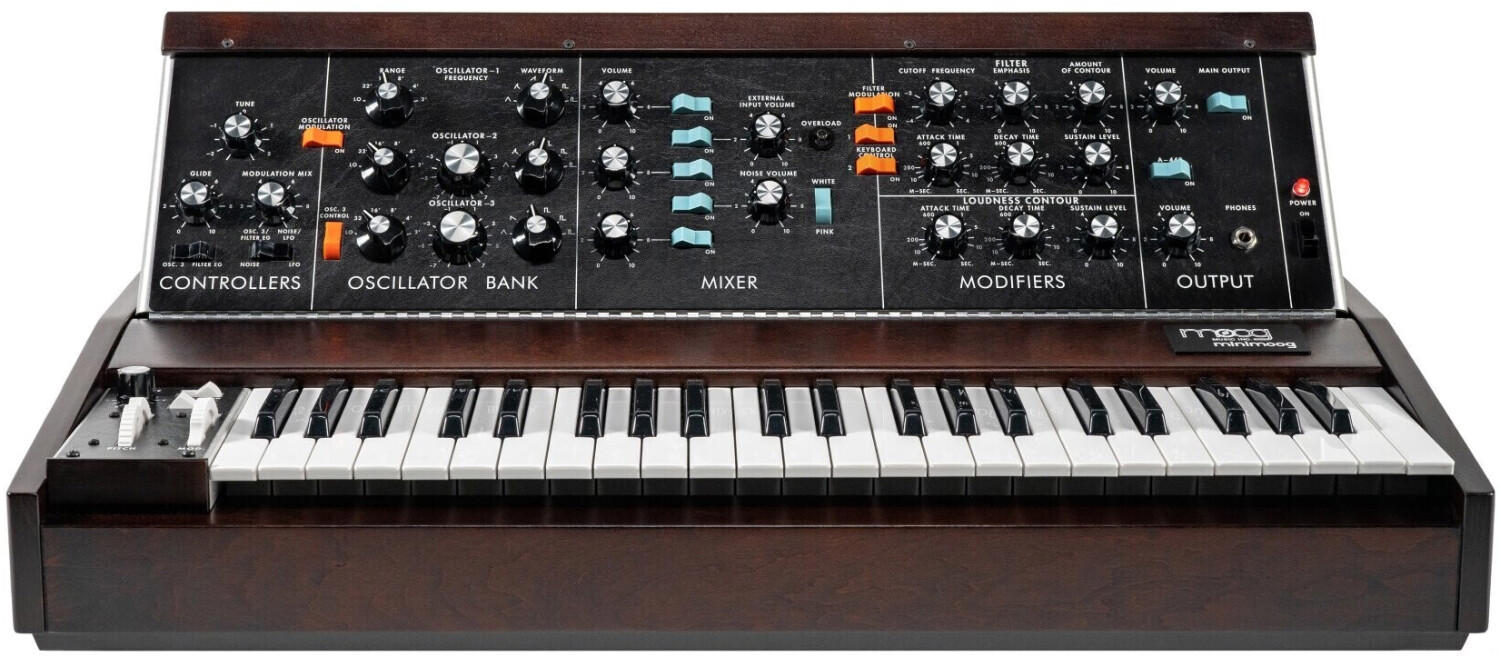
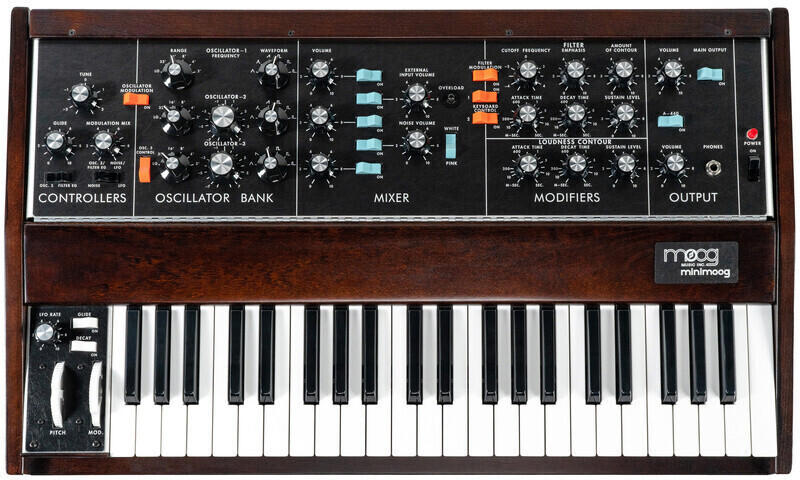


Construction material
The construction material determines the durability and overall quality of the synthesizer. Synthesizers made with high-quality materials will have a longer lifespan and better resistance to wear and tear.
One example of a synthesizer that uses top-quality construction material is the Moog Subsequent 37. It features a rugged steel chassis which provides excellent durability, making it ideal for use on the road or in a studio setting. Another option is the Yamaha Montage 8, which boasts a metal construction that ensures it can withstand heavy use and transport. Additionally, the Korg Prologue synthesizer proudly presents an aluminum front panel that not only enhances its overall durability but also gives it an elegant and sleek look.


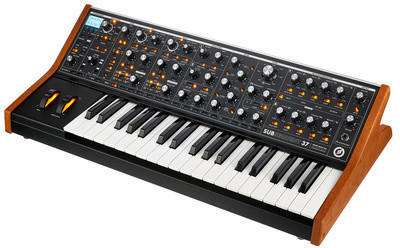
It is worth noting that some synthesizers might also utilize a combination of materials, such as plastic and metal. These constructions can vary depending on the intended use of the synthesizer. For example, entry-level and portable synthesizers often incorporate plastic components to reduce weight and provide portability. One such synthesizer is the Novation Launchkey Mini MK3, which showcases a lightweight yet durable plastic construction. On the other hand, higher-end synthesizers, like the Dave Smith Instruments Prophet X, might integrate metal elements into specific areas for added strength and stability while still maintaining a reasonable weight.



Durability
Synthesizers are complex electronic instruments that require careful handling and may be exposed to wear and tear over time. Looking for synthesizers made with high-quality materials and components is essential to ensure longevity and reliability. For example, the Moog Subsequent 37 is renowned for its rugged build quality, featuring an all-metal construction and premium components that contribute to its durability. Another option is the Korg Prologue, which incorporates a robust aluminum enclosure, protecting the internal electronics from potential damage. These synthesizers are designed to withstand the demands of both studio use and live performances, offering musicians a reliable and long-lasting investment.



Power supply options
There are two main types of power supply options available: AC power supply and battery power supply. AC power supply allows the synthesizer to be plugged into a wall outlet, providing a stable and consistent power source. This option is ideal for studio use or live performances where a reliable power source is readily available. Some examples of synthesizers that offer AC power supply are the Moog Subsequent 37 and the Korg Minilogue XD.
On the other hand, battery power supply provides portability and convenience, allowing the synthesizer to be used in any location without the need for a power outlet. This option is often preferred by musicians who perform on the go or in areas without easy access to electricity. The Arturia MicroFreak and the Novation Circuit Synthesizer are popular examples of synthesizers with battery power supply.




Within the market, some synthesizers offer both AC and battery power supply options, such as the Roland JD-Xi. This can be a great choice for those who value versatility and flexibility in their synthesis setup.



Expansion capabilities
The ability to expand and customize your synthesizer allows for more creativity and flexibility in your music production. Some synthesizers have built-in expansion slots, allowing you to add additional sound libraries and samples. For example, the Korg Kronos comes with 9 types of sound engines and a built-in SSD for storing vast amounts of sound data. Additionally, it has two internal expansion slots that support up to 2GB of user memory each, enabling you to install optional libraries of your choice. Another noteworthy option is the Yamaha MODX8. This synthesizer features the Yamaha Expansion Manager, which allows for creating custom libraries and installing expansion packs to increase the available sounds and capabilities. These expansion capabilities ensure that your synthesizer can grow with your evolving musical needs.



Patch memory
Patch memory refers to the ability of a synthesizer to store and recall different sound settings, or patches. Having a synthesizer with a good patch memory enables you to easily save, organize, and recall your own custom sounds or presets.
When looking for synthesizers with impressive patch memory capabilities, certain products come to mind. The Korg Prologue 8 is a fantastic option with its generous 500 patch slots that can be filled with an extensive collection of synthesizer programs. Another impressive synthesizer in this regard is the Arturia MatrixBrute. With a colossal 256 patch slots, it allows users to create, edit, and save their own sounds with infinite possibilities. Other notable options include the Novation Peak with its 512 preset slots and the Sequential Prophet X with a whopping 15000 user-programmable preset patches. These synthesizers offer musicians plenty of memory to store their favorite patches and unleash their creativity without limitations.
Software integration
The ability to seamlessly integrate with your preferred DAW and software plugins can greatly enhance your workflow and creative possibilities. One product that excels in software integration is the Native Instruments Komplete Kontrol S61 Mk2. With its deep integration with the Komplete software package, it allows you to easily browse, load, and control all your virtual instruments and effects directly from the hardware. Another excellent option is the Arturia KeyLab Essential 61. Equipped with Analog Lab software, this synthesizer provides seamless integration, allowing you to quickly load and control thousands of authentic presets from Arturia's vast collection.
In terms of software-integrated synthesizers, there are a few notable groups in the market. The first group consists of synthesizers specifically designed as MIDI controllers with deep integration capabilities. Products such as the Alesis VI49 and Novation Launchkey MKIII excel in this area as they provide direct access to popular DAWs and virtual instruments. The second group includes synthesizers that come bundled with powerful software packages tailored to their capabilities. Examples include the Roland JD-Xi, which integrates with software such as the Roland Synth Editor and SH-01A Plugin for deeper sound customization and expanded control options. Overall, carefully considering the software integration of a synthesizer will ensure a harmonious integration into your existing digital music setup.


Price
Whether you are a beginner on a budget or a professional willing to splash out, there are synthesizers available in every price range. In the lower price range, under $500, you can find the Behringer DeepMind 12 synthesizer, which offers a 12-voice polyphony, 4 FX engines, and a vast range of sound-shaping capabilities. Moving up to the mid-range market, there is the Korg Minilogue XD priced around $600, providing 4-voice polyphony and digital multi-engine sound capability to create versatile sounds. For those willing to invest more, in the higher price range, consider the Moog Subsequent 37 at around $1,500. This high-end synthesizer offers 2-note paraphony and Moog's iconic ladder filter for a rich and powerful sound experience.
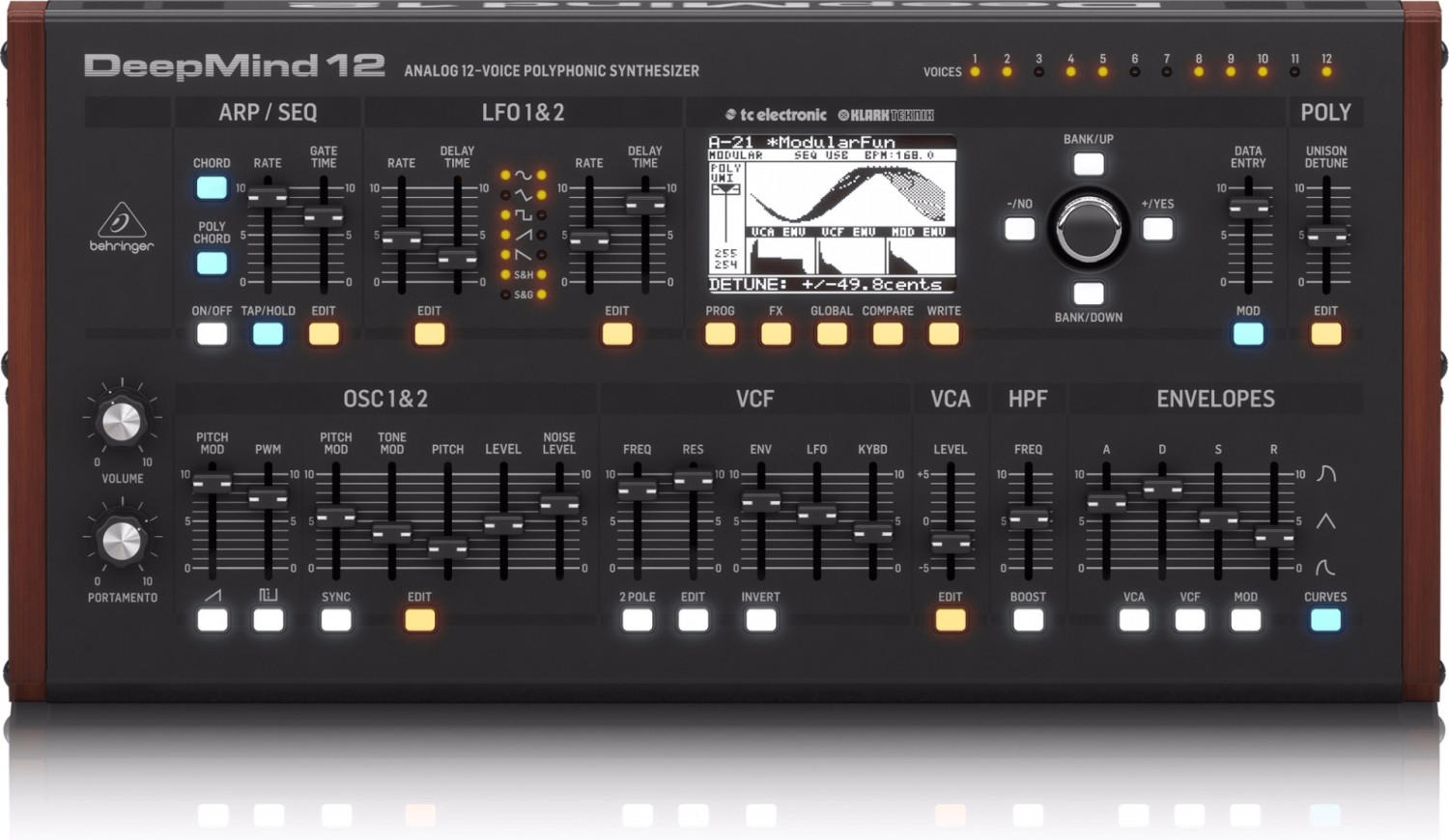


Variety of brands
Each brand comes with its own set of pros and cons that are worth considering. For example, Moog is a renowned brand that offers high-quality analog synthesizers known for their warm and rich tones. Models such as the Moog Subsequent 37 boast impressive specifications like a 2-note paraphonic pitch capability, built-in step sequencer, and extensive modulation options. On the other hand, Korg is another esteemed brand that offers a range of synthesizers catering to various music genres. One of their popular models, the Korg Minilogue XD, offers a powerful synth engine, digital effects, and polyphonic capabilities at an affordable price point.
Other notable brands that should be explored for their unique offerings include Roland with its diverse selection of keyboards and synthesis technologies like the legendary Roland JUNO-DS61, which features expressive playability and versatile sound creation. Dave Smith Instruments is another standout brand renowned for its high-end and innovative analog and digital synthesizers. The Prophet Rev2 from this brand showcases an easy-to-use interface, a vast array of sound creation options, and reliable build quality. Additionally, brands like Arturia, Novation, and Access form another group that caters specifically to different music styles and production needs. By considering the pros and cons of these different brands, you can make an informed decision when selecting the best synthesizer for your requirements.


